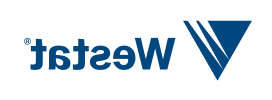This website uses cookies so that we can provide you with the best user experience possible. Cookie information is stored in your browser and performs functions such as recognizing you when you return to our website and helping our team to understand which sections of the website you find most interesting and useful.
With 4 decades of designing and managing large, complex surveys, 趣赢平台’s Brad Edwards has decided to add another leadership position to his resume by becoming one of 2 Editors-in-Chief of the Journal of Survey Statistics and Methodology (JSSAM). Edwards, a Vice President and Lead Scientific/Methodology Advisor in the Data Solutions Sector, joins Emily Berg, PhD, an Associate Professor at Iowa State University, in this role that begins in July. In this Q&A, he explains why he accepted this editorship, its inherent challenges and opportunities, and how he and Berg plan to position JSSAM to tackle new and emerging research on survey statistics and methodology in a time of significant changes in the field.
Q. What prompted you to take on this new role?
A. Several reasons. It offers me another opportunity to engage with the best and brightest in the field, help them develop in their careers, and, by so doing, give back to the profession I love. And it allows me the chance to learn about and consider new, innovative survey methods and applications and share them widely through the journal.
Q. What challenges and opportunities do you expect to have?
A. A major challenge will be keeping up with submissions and reviews. We’ll be getting approximately 150 submissions per year, but we only publish 5 issues a year with about 12 articles each. So, Emily and I will be assigning them to associate editors, but we will still need to conduct overall reviews and make final decisions regarding their publication. In terms of opportunities, we will be able to position JSSAM at the center of several challenges related to our field. For example, our field is in flux, facing serious challenges to its foundations of probability sampling and standardized interviewing, which were established nearly a century ago. And we have declining response rates, increasing costs, and greater prevalence of data from non-probability-based surveys, which magnify other difficulties associated with survey statistics. But if we broaden the journal’s reach by developing greater diversity within the editorial team and seek more articles that address issues important to survey statistics and methodology today, we believe we can find answers to those challenges.
Q. How do you plan to put your own stamp on JSSAM and shape the direction and focus of the journal?
A. Diversity, equity, and inclusion (DEI) will be our focus for the journal, so our editorial team, contributors, and article content will be diverse. This will lead to a stronger journal. We also plan to push new and emerging issues to the forefront such as the use of video interviews and artificial intelligence (AI) in surveys and the renewed interest in causal inference.
Q. Can you elaborate on your plan to make DEI the guiding value for JSSAM?
A. We will form an editorial team with a mix of substantive interests and expertise and draw these associate editors from academia, industry, and government. To increase efforts to attract new reviewers and contributors, we’ll publicize JSSAM across a wide range of platforms and focus on its social media presence. We also plan to seek some associate editors from outside North America and Europe. As I mentioned, diversified submissions will be encouraged, including those from survey statisticians in earlier stages of their careers. We also hope to develop a special issue on DEI issues in surveys, with content ranging from perspectives to practice.
Q. Speaking of attracting contributors, you’ve recently co-authored a paper in JSSAM. What is it about?
A. Reconsidering Sampling and Costs for Face-to-Face Surveys in the 21st Century is about household surveys, exploring a sample design that uses census tracts at the first stage rather than counties as traditionally used. The traditional design was developed more than 70 years ago, and many of its assumptions—about travel costs, supervision, training, the local labor force—don’t hold today. This research shows cost benefits with higher effective sample sizes, vital for contemporary in-person surveys.
Q. How are you viewing your new, upcoming position?
A. It is an honor to be selected for this 4-year term, and I am grateful to 趣赢平台 colleagues who helped me consider this role. I’m looking forward to getting started.
-
Perspective
Public Health in Action: 趣赢平台 APHA 2024 HighlightsNovember 2024
趣赢平台 staff made their mark at the 2024 American Public Health Association (APHA) Annual Meeting and Expo, which was held in Minneapolis, Minnesota, October 27-30.…
-
Expert Interview
Timely Data-Driven Solutions for Nursing HomesNovember 2024
The COVID-19 pandemic has had a devastating impact on the nursing home sector, resulting in hundreds of thousands of deaths of residents and staff and…
-
Perspective
趣赢平台 Work Shines at 2024 APHSA EMWB ConferenceSeptember 2024
趣赢平台 human services experts recently presented at the American Public Human Services Association (APHSA)’s Economic Mobility and Well-Being (EMWB) Conference in Portland, Oregon. At the…


